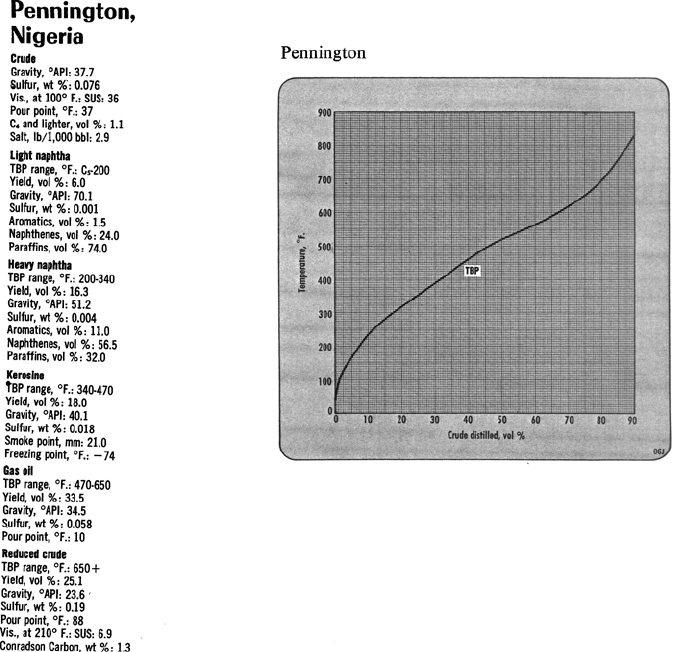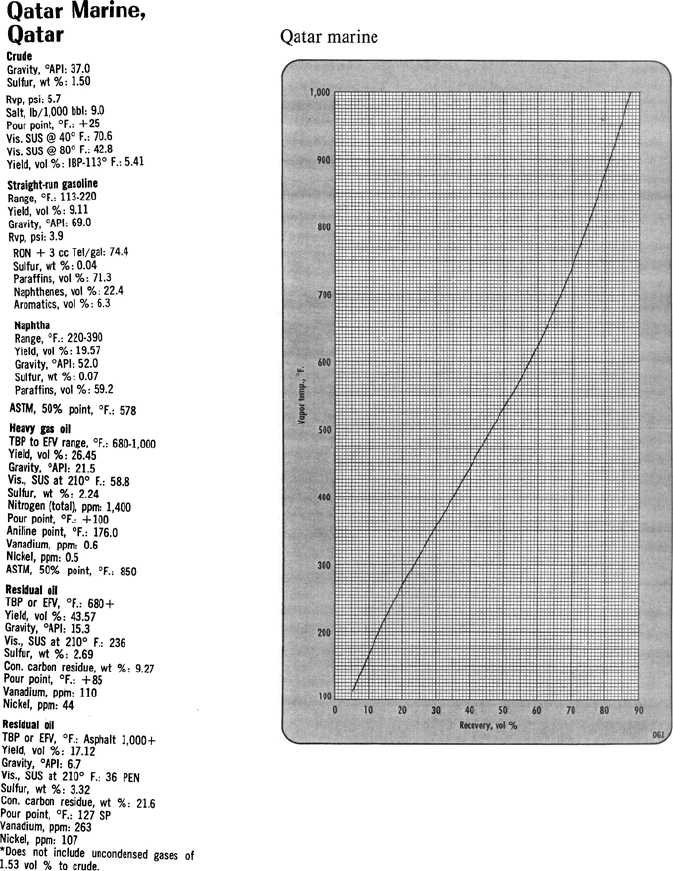Jones D.S.J., Pujado P.R. Handbook of Petroleum Processing
Подождите немного. Документ загружается.


1327

1328

1329
Appendix D
Conversion factors
1330

A DICTIONARY OF TERMS AND EXPRESSIONS 1331
To Convert From To
Multiply By
Length
Feet
Inch
Statute Mile
Meter m
Millimeter m m
Kilometer
Area
Square inches
Square inches
Square inches
Square feet
Acres
Square millimeters
Square centimeters
Square meters
Square meters
hectare
645.2
6.452
0.000645
0.0924
0.4047
Volume
Cubic inches
Cubic inches
Cubic inches
Cubic feet
Fluid ounces
Gallons (US)
Cubic millimeter
Cubic centimeter
Cubic meter
Cubic meter
Milliliter
Liter
16387
16.387
0.00001639
0.0281
29.57
3.785
Mass
Pounds
Ton ( short)
Ton (long))
Kilogram kg
Metric ton tonne
Metric ton tonne
0.4536
0.9072
1.016
Pressure
Pounds per square inch
Pounds per square inch
Kilograms per sq meter
Bar
Pascal
Kilopascal
Pascal
Kilopascal
6895
6.895
9.807
100
Force
Pounds force
Kilogram force
Newton
Newton
4.448
9.807
Work
British thermal unit
Foot pound
Calorie
Joule
Joule
Joule
1055
1.356
4.186
Power
Btu / hour
Btu / sec
Horsepower
Watt
Watt
Kilowatt
0.293
1055
0.746
Flow Rate
Cubic feet per minute
Gallons (US) / minute
Barrels (US) oil
Cubic meters / minute
Liter / minute
Gallons Oil (US)
0.0283
3.785
42
Specific Energy. Latent Heat
BTU / Pound Joule / Kilogram 2326
Specific Heat, Specific
Entropy
BTU / Pound – deg F
Joule / Kilogram - Kelvin 4184
Miscellaneous
(US) Barrels per day
(US) Gallons
(US) Gallons / hour
Imperial gallons
1.75
0.8326
0.304
25.4
1.609
Appendix E
An example of an exercise using linear programming
1332
Linear programming aids decisions
on refinery configurations
D. S. J. Jones
Fluor (England) Ltd.
and
J. N. Fisher
Bonner & Moore Associates, Inc., Houston, Texas
Mathematical modeling using linear programming can solve many problems associ-
ated with refinery operation and planning. The technique, compared with the cost of
an error of judgment, represents only an insignificant financial outlay.
It is becoming more and more evident that there is a definite economic incentive to
studying problems associated with refinery planning by mathematical modeling using
linear programming.
Ever-increasing investment costs associated with the tightening of product specifica-
tions, changing crude slates, alterations in the energy pattern in marketing countries,
and expanding petrochemical requirements, all make an error in decision judgment of
refinery processing increasingly costly. Whereever this basic risk can be reduced by
modern mathematical techniques, the potential saving in capital or investment could
make the financial outlay on such a study insignificant.
What follows is a description of a typical refinery simulation study but this is only one
of an increasing number of problems that can be solved by mathematical modeling
using linear programming.
Wider impetus. The application of linear programming techniques using comput-
ers has long been used in the oil refining industry for the development of planning
and operating policies. With the introduction of modern high-speed, large-capacity
computers, this technique grew considerably within the industry.
Briefly, linear programming is the developing of linear sub models which mathemat-
ically describe many of the various operations within the industry, such as refinery
processing, crude and product flows, marketing demands. etc. These linear sub models
are inter-related to build up a complete mathematical model of the specific operation.
By the use of the computer, the equations within the model can be solved to optimize,
on a selective basis, the operation under study.
1333
1334 A DICTIONARY OF TERMS AND EXPRESSIONS
The growth of mathematical models using this technique provides management with a
means of making an increasing number of decisions which do have a calculable basis.
Thus, in many cases, the need for decisions based only on individual experience or
‘feel’, with its obvious inherent dangers, is being eliminated.
One such study illustrates a relatively simple refinery problem application of mathe-
matical modeling and linear programming techniques.
Definition of problem
The client, wished to build a new refinery. It had already executed a marketing survey
in the area and could specify quantity and quality, together with prices, of the products
which would meet its market requirements. Its management now had to decide the
economic optimum refinery configuration that would satisfy its crude and product
slate. At this stage only one type of crude was intended for the refinery, and to
some extent this simplified the problem. However, to satisfy other considerations,
management required the solutions to the following premises:
r
The refinery configurations, which would satisfy a MINIMUM investment, when
producing a high volume of gasoline with and without a low sulfur content limita-
tion of the fuel oil. All other products were to meet quality and quantity require-
ments.
r
The refinery configurations which would give the MAXIMUM return on investment
to satisfy a fixed crude throughput with no quantity restriction on the product slate,
and then to satisfy a limited restriction on the product slate with no limit to the
crude throughput.
Such a problem lends itself readily to linear programming and thus a refinery simu-
lation model was developed to solve these two premises.
Process consideration
The first step in constructing the model was to establish as many processing units as
could conceivably contribute to the solution of the problem. For instance, with such
large requirements of gasoline there would obviously be required a cracking unit of
some kind. Thus, the model included a reformer, fluid cracker, hydrocracker, coker
and visbreaker. Some combination of these processes must satisfy the premises of the
problem.
Similarly, the lower sulfur content of the fuel oil would probably require some form
of residue treating. Thus two severity desulfurizers for both short and long residue
respectively were included together with a process for hydrocracking these residues.
A DICTIONARY OF TERMS AND EXPRESSIONS 1335
The many process units now included were then defined in terms of feed streams,
product yields and quality, and operating costs, all based as a percentage on the feed
streams. This part of the study was the first important step which required the expertise
of specialists. This data forms the basis for the rational solution to the problem, and
therefore it was necessary to be accurate and to augment prediction and theory with
realism and technical experience.
For instance, in arriving at the yields from the crude and vacuum units the effect of
fractionation on the product yield was considered. Realistic ASTM distillation gaps
were used that could be met by a commercial distillation unit.
In the fluid catalytic cracking units a more sophisticated approach was needed to
correlate the yields from the many feedstocks which would be independent of thermo-
dynamic considerations. Here a base case feed yield data (in this case a straight run
waxy distillate) at a conversion of 75% using zeolite catalyst was used.
Yields from all other feedstocks (including those which had been hydrotreated) were
related by first principle kenetic and thermodynamic considerations to the base case.
A short and simple computer program was used for this purpose, and it was also
possible to simulate the effect of changing the quantity of zeolite catalyst by this
means. The results of these computerized calculations were checked against existing
plant data before being incorporated into the study.
In other processes such as hydrocracking, hydrotreating, visbreaking, etc., care was
taken that only proven yield data or correlations were used.
Catalytic reforming yield data was obtained from a correlation which related yield
to severity for a basic naphthene and aromatic content of the feed-stock. A whole
range of severity operations from 95 to 105 O.N. (Research) clear was encompassed
in the study. Spot checks of the predicted yield by this method against actual yield
from an operating unit showed that the method was viable and acceptably accu-
rate.
Basic economic data
Having developed the physical yield structure of the ‘model’, the next step was to
complete the basic data by providing investment and maintenance costs.
There is, of course, a considerable wealth of plant cost data available to a contractor
from the projects he has completed over the years. However, there is always the need
to analyze these costs, and to review them in terms of up to date material and labor
cost changes.
1336 A DICTIONARY OF TERMS AND EXPRESSIONS
For this study, a large amount of cost data was statistically analyzed for each type of
plant. From this analysis, a base cost and an empirical expotential factor was developed
in order to relate a total investment cost to capacity in as realistic a way as possible.
This realtionship can be expressed mathematically in a non-linear form.
C = C
o
(T/T
o
)
k
where
C = Investment cost
C
o
= Base cost at a base throughput T
o
T = New throughput
K = An empirical constant
The inclusion of a non-linear form for investment costs in a linear program required
special consideration, and we shall see later how this was utilized.
In the models, many of the units considered were licensed processes, for which a
royalty would be paid. A value in terms of a paid up royalty in dollars per barrel of
throughput was included in the investment. Where chemicals and catalysts were used,
the first inventory of these was also included as part of investment.
Chemicals and loss of catalyst was considered as an operating cost based on usage as
were utilities. Labor, a fixed operating cost, wasincluded with the return on investment.
Maintenance cost was fixed as a percentage of the total maintenance cost.
Model Development
At the same time as the process and cost data were being generated, the basic form
that the model would finally take was also being developed. This consisted of defining
the various optional routes of each stream within the simulated refinery model.
The optional routing of the streams was carefully selected. This selection had to satisfy
at least one of two requirements. Firstly, would such a routing actually contribute to
satisfying the product slate and the premises of the problem? Secondly, would such a
routing be feasible under actual operating conditions?
Just as a refinery is described by the units of which it is comprised, so also was
the refinery linear model described. Here, each processing unit was considered a
submodel in itself and these submodels were defined by their process and economic
data.
These data were arranged in tabular from which were easily accessed and listed in
recognizable terminology. An example of a submodel tabulation as used in this study
